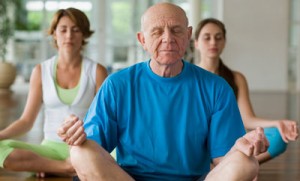My roommate is very concerned about the freshman 15. Which is complete and utter ridiculousness if you ask me. If you do not have a problem with weight gain, why should it make that much of a difference in college?

Lets play devils advocate for one minute. If freshman year of college DID cause weight gain: Causation: College causes weight gain.
Reverse Causation: weight gain causes college.
Third Variable: Stress, binge drinking, lack of sleep, greasier foods, less working out ext
So I’m not going to lie I see where the idea comes from. But WHERE exactly did the widespread belief of gaining 15 pounds, while getting a higher education, come from?
jezebel.com calls on Seventeen magazine for the blame, “Doctors were able to pinpoint the place where the lie got started: A 1989 issue of Seventeen magazine. The line “FIGHTING THE FRESHMAN 15” appears on the August 1989 issue, making it one of the most damaging cover lies of all time (Hartmann). I suppose it is possible that this magazine would cause this much talk over weight gain. The magazine’s audience is seventeen-year-olds, and those girls are about to get into college. But shame on them, the magazine is supposed to give girls advice, not promote the importance of not gaining weight. It irrationally being publicized for anyone in the world to see, were they not the least bit concerned? And furthermore, if you ask any person between the ages of 16-26, the majority of them would be able to tell you what the freshman 15 is. Which brings me back to this is complete ridiculousness.
According to Today, “A huge part of college is getting to know people and building relationships. That means loading up on “social calories” from eating, drinking and partying” (Bourassa). What is trying to be said here is that the calories that are causing the weight gain could really just be coming from the social events. You eat because you go out to eat often with friends, so that would be a perfect example of social calories. We all do it.
However according to the US National Library of Medicine National Institutes of Health, the article states that “The authors observed an average weight gain of 2.7 lbs. About half of the students gained weight, and 15% lost weight. Men gained more weight than did women” (Mihalopoulos). Right there. A .gov site nips this stupid myth in the butt; thank goodness.
Along with that last fact, WebMD says that “At least a quarter of all freshmen lose weight during their first year. The average woman gains 3 pounds as a freshman and the average guy gains 3.5 pounds” (Hartmann). So it is not even enough of a weight gain to be noticeable…or to be stressing about.
The Huffington Post made a good point of this when it was said that, “According to the researchers, this may be because many 17 or 18 -year-olds are simply not at their full adult size (both in height and weight) before heading off to college” (Grannell). So simple. Look at how easy it could be if every college student just comes to the conclusion that they just weren’t done growing yet? Maybe we could have avoided the whole freshman 15 nonsense.
The article went on to say that, “For women, the difference between first day of school and graduation was between seven and nine pounds; for men, it was between 12 and 13 pounds. Overall, the only consistent “cause and effect” relationship was between boozing and weight” (Grannell). So we should all learn that the weight problems are in large part directly correlated with alcohol consumption.
An article in Psychology Today said that, “They found those freshman living on campus were almost three times as likely as the community sample to gain weight but by their junior year they were almost back at baseline levels” (Karasu). So realistically, even if you were to gain any weight, your body will bring itself back down to your normal weight and comfortability.
So, ladies: do not worry about the freshman 15, it is clearly an overexposed myth.
Works Cited
Bourassa, Sarah. “The Myth of the ‘freshman 15’: How to Survive the College Diet.” TODAY. N.p., n.d. Web. 18 Sept. 2014.
Grannell, Rachael. “Why The ‘Freshman 15’ Is A Lie.” The Huffington Post. TheHuffingtonPost.com, 06 Sept. 2013. Web. 18 Sept. 2014.
Hartmann, Margaret. “Freshmen 15 Doesn’t Exist, Was Invented By Seventeen.” Jezebel. N.p., n.d. Web. 18 Sept. 2014.
Karasu, Sylvia R. “College Weight Gain: Debunking the Myth of the ‘Freshman 15′” Psychology Today: Health, Help, Happiness + Find a Therapist. N.p., n.d. Web. 18 Sept. 2014.
Mihalopoulos, Nicole L., Peggy Auinger, and Jonathan D. Klein. “Abstract.” National Center for Biotechnology Information. U.S. National Library of Medicine, 18 Aug. 0000. Web. 18 Sept. 2014.
Scott, Elizabeth. “Is The “Freshman 15″ Due Entirely To Stress?” About. N.p., n.d. Web. 18 Sept. 2014.























